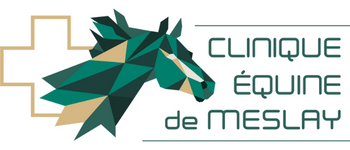CASTRATIONS
Male horses can be castrated in different ways. In young horses, standing castration is most often chosen, as it does not require general anesthesia. When horses become older (from 4 years old), a closed (or surgical) castration is recommended.
CRYPTORCHIDES
The horse is a species particularly prone to cryptorchidism (presence of one or two undescended testicles in the scrotum). The testicle may be in the inguinal (removed without penetrating the abdominal cavity), abdominal or inguino-abdominal position. These three conditions require an operation in the operating room. For some years now, abdominal testicles can be removed in a minimally invasive way, by laparoscopy on a standing horse.
PENIS
The horse’s penis can be affected by tumors. If these are too large or aggressive, an amputation of the penis must be performed. The horses tolerate this operation very well and return to a normal life.
VESSIE
Newborn foals (especially males) may be born with a ruptured bladder.
This is a major emergency and the foal must be operated on quickly. The bladder is sutured during a laparotomy. Adult horses can develop urinary stones, most often bladder stones. If they are large, they must be removed under laparotomy.
RECTO-VAGINAL FISTULAS
During a difficult foaling, a limb of the foal can perforate the vagina and a communication is created between the vagina and the rectum. These mares are operated on to restore the integrity of the vagina and rectum, which will allow them to breed again.
LAPAROSCOPY / CELESCOPY
Laparoscopy is a technique that allows to visualize the inside of the abdomen in a minimally invasive way (using a camera as for arthroscopy). In the horse, the camera (more correctly named laparoscope) is 30 cm long in order to be able to access very deep crucial areas (inguinal ring, epiploic foramen). It is introduced into a cannula previously inserted with a trocard. To have a good visualization and to take the minimum risk for the internal organs, the abdomen is distended with gas (CO2). Two (or more) other doors are put in place using 2 other cannulas. These will be used for instruments. The most useful instruments are forceps (also very long) and a coagulation instrument, the Ligasure, which can coagulate vessels up to 7 mm. This makes it possible to remove testicles very easily without the need for intra- or extra-corporeal ligation. In the case of intra-abdominal testicle castration or tumor ovary removal, after dissection with the ligasure, one of the very small “doors” is enlarged in order to remove the ovary previously cut into pieces inside the abdomen. Thus, 40cm ovaries can be evacuated through an incision of less than 10cm! In practice, the horse stands under sedation and local anesthesia. The risk of general anesthesia is thus avoided.


